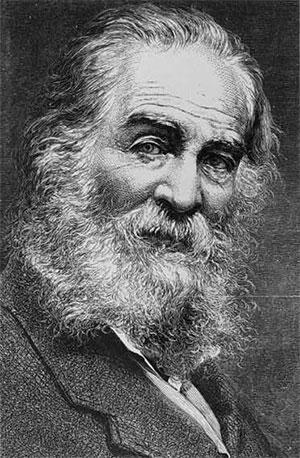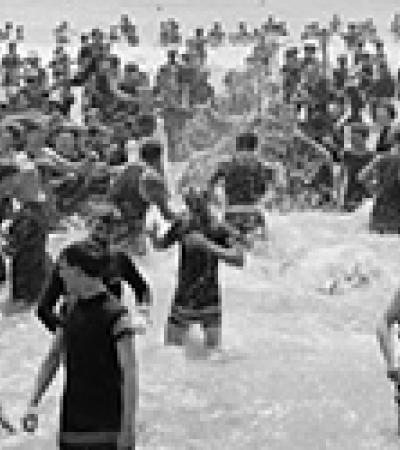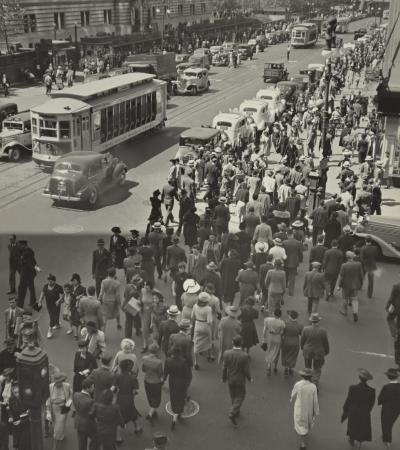This month, EDSITEment offers standards-ready text resources; examines General George Patton’s “Speech to the Third Army”; discovers Pearl Buck’s America; rounds up Fourth of July resources; looks at the Battle of Gettysburg; and discusses Walt Whitman and the Civil War.
Summer Reading for Teachers
This summer, as educators select teaching texts in preparation for the college and career-ready standards implementation, EDSITEment offers a list of aligned resources for college and career-ready standards text exemplars. These text exemplars epitomize the level of complexity and quality and range that the standards require of all students in a given grade level. They are meant to serve as guideposts. EDSITEment follows each author and exemplary text on this list with related lesson plans, reviewed websites, NEH features, as well as entries from the Closer Readings blog.
General George Patton’s Speech to the Third Army
Though they often referred to him as “Old Blood and Guts” (a description he disliked), most of the men who served with General George Patton regarded him as a charismatic leader and, despite—or, according to some, because of—his copious use of profanity, an inspirational speaker. He commanded respect not only for his technical expertise, but also for his keen understanding of the human psyche (especially in wartime) and his prodigious knowledge of history and warfare. The Launchpad “Speech to the Third Army” by George S. Patton, Jr. provides background information about Patton and discussion questions to enhance your understanding and stimulate conversation about his speech. In addition, the guide includes a series of short video discussions. These seminars help capture the experience of high-level discourse as participants interact and elicit meaning from a classic American speech.
“On Discovering America”
American author Pearl S. Buck returned to the United States in 1934 after spending most of her life in China. Upon her return, Buck found a climate of religious intolerance and ethnic prejudice as various groups struggled to identify themselves as the only “true” Americans. In her essay, “On Discovering America,” published in the June 1937 issue of Survey Graphic magazine, Buck explores the meaning of the term “American” and immigrant relations in the 1930s. In this lesson, students will explore American immigration patterns in the 1930s and look at how the media portrayed immigrants during that time. Through a study of Pearl S. Buck’s essay, “On Discovering America,” they will learn about American attitudes toward immigrants and the meaning of the term “American” to both native and immigrant populations.
Thomas Jefferson and Frederick Douglass for the Fourth
“The 4th of July is the first great fact in your nation’s history—the very ring-bolt in the chain of your yet undeveloped destiny … to the chain of your nation’s destiny; so, indeed, I regard it. The principles contained in that instrument are saving principles. Stand by those principles, be true to them on all occasions, in all places, against all foes, and at whatever cost.”—Frederick Douglass, “What To the Slave is the Fourth of July?” July 5, 1852. EDSITEment’s 4th of July: Protest, Revolution, and Independence looks at African Americans in the Revolution and beyond, Colonial protests, the Declaration of Independence, the Founders, religion, and teh Revolutionary War.

The Battle of Gettysburg
After the first shots at Fort Sumter, both the North and South rushed to mobilize for war. Few had any notion that this war would last four grueling years. Most northerners believed that their advantages in men and materiel would bring a quick victory; nevertheless, the first two years proved to be quite trying for the Union as the Confederate Army of Northern Virginia scored a number of spectacular victories in the Eastern theater of the war. It was only after the twin Union victories at Gettysburg and Vicksburg that the tide of the war turned; thereafter the war became a slow grind that ultimately exhausted not only the Confederacy’s army, but its economy and society as well. Through the use of maps and original documents, this lesson will focus on the key battles of the war and how they contributed to its outcome. It will also examine the “total war” strategy of General Sherman, and the role of naval warfare in bringing about a Union victory.
Walt Whitman’s Civil War (150th Anniversary)
This blog post on Walt Whitman highlights resources on his writing and first-hand experience of the American Civil War. as the blog post notes, “No commemoration of the 150th anniversary of the Civil War would be complete without reference to Whitman’s experiences and reflections of this conflict. As he made his rounds of the army hospitals in Washington, D.C., tending to the sick and wounded, his poet’s eye was taking in as much as he was giving out succor and support to the soldiers.”



